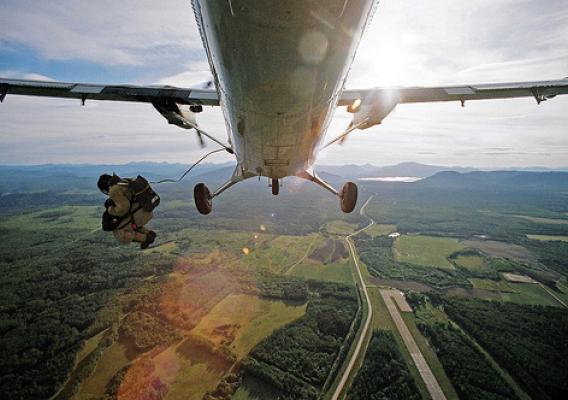This blog is part of a series from the U.S. Forest Service on its wildland firefighting program to increase awareness about when and how the agency suppresses fires, to provide insights into the lives of those fighting fires, and to explain some of the cutting-edge research underway on fire behavior. Check back to the USDA Blog during the 2013 wildfire season for new information. Additional resources are available at www.fs.fed.us/wildlandfire/.
Imagine jumping from a plane into a fire, with enough provisions to last for several days. That’s what highly trained Forest Service smokejumpers do to provide quick initial attack on wildland fires.
The attack is a well-choreographed scenario. Aircraft can hold anywhere from eight to 16 jumpers, a ‘spotter’ who stays with the plane, the pilot and provisions to make the jumpers self-sufficient for 72 hours. The spotter is responsible for the safe release of the jumpers. Once the jumpers have landed, the aircraft will circle around and drop their cargo by parachute from just above treetop height. The spotter also is responsible for communicating essential information about the wind, fire activity and the terrain to the jumpers, the pilot and to dispatch centers.








